EVGA’s new G7 line offers top-performance, besides super-compact dimensions. The SuperNOVA 850 G7 is the best EVGA 850W G series model released so far, meeting the Corsair RM850x (2021) eye-to-eye. FSP, the OEM behind the G7 line, managed to offer a top platform this time.
The best lines in EVGA’s G series were those made by Super Flower (G2 and G3), followed by the G6 line, which used the Seasonic Focus Plus Gold platform. Although the 850 G6 model was good, it was still inferior to the Corsair RM850x (2021), which is among the best PSUs that money can buy today. When someone asks me which PSU to suggest for a gaming system, the RM850x is the first that comes to mind. Jon Gerow and his team of engineers managed to make something extraordinary with the RMx line, making things challenging for the competition. Once I heard about EVGA’s G7 line, I didn’t know what to expect, especially when I noticed the tiny dimensions. Compact-sized PSUs are easier to install and look nice, but the small PCB sets lots of restrictions on performance and noise output, making it tougher to go after the intense competition.
The SuperNOVA 850 G7 promises top-performance and reliability, hence the ten-year warranty, and with such small dimensions, it looks like an SFX-L unit rather than an ATX one. Despite the restricted internal space, which makes its disassembly challenging, FSP managed to squeeze inside a board with LED load indicators.
I don’t know if these will come in handy, though, given that they are on one of the PSU’s sides, so users must have a clear view of the PSU to check on them. It would be preferable if these LEDs could be somehow installed on an external PCB and on the desk for easier access. But this would increase the cost and add another cable to route from your system on the desk. I am so sick of cables coming out of the PC case; I wish everything could be wireless, even the power cord! But we will need many years until technology reaches this state, and hopefully, I will be reviewing vacation spots by then, not PSUs!
Cybenetics Report- Manufacturer (OEM): FSP
- Max Power: 850W
- Efficiency: Cybenetics Platinum (89-91%), 80 PLUS Gold
- Noise: Cybenetics Standard++ (30-35 dB[A])
- Form Factor: ATX12V v2.52
- Alternative Low Power Mode support: ✓
- Power 12V: 850W
- Power 5V + 3.3v: 120W
- Power 5VSB: 15W
- Cooling: 120mm Fluid Dynamic Bearing Fan (MGA12012XF-O25)
- Modular Design: Yes (Fully)
- High Power Connectors: 2x EPS, 6x PCIe 6+2 pin (on 4x cables)
- Peripheral Connectors: 9 SATA (on 3x cables), 4x 4-pin Molex (1x cable), 1x FDD adapter
- Dimensions (W x H x D): 150 x 85 x 130mm
- Warranty: 10 years
Protection Features
| Protection Features | |
| OCP (Cold @ 31°C) | 12V: 101.2A (142.97%), 12.160V 5V: 30.7A (127.92%), 5.101V 3.3V: 29.1A (121.25%), 3.367V 5VSB: 4.3A (143.33%), 4.978V |
| OCP (Hot @ 46°C) | 12V: 98.2A (138.71%), 12.179V 5V: 28.3A (117.92%), 5.106V 3.3V: 29A (120.83%), 3.369V 5VSB: 4.3A (143.33%), 4.983V |
| OPP (Cold @ 33°C) | 1230.95W (144.82%) |
| OPP (Hot @ 43°C) | 1196.11W (140.72%) |
| OTP | ✓ (142°C @ 12V Secondary Side) |
| SCP | 12V to Earth: ✓ 5V to Earth: ✓ 3.3V to Earth: ✓ 5VSB to Earth: ✓ -12V to Earth: ✓ |
| PWR_OK | Proper Operation |
| NLO | ✓ |
| SIP | Surge: MOV Inrush: NTC Thermistor & Bypass Relay |
Over current protection at 12V and over power protection are set too high, most likely to cope with power spikes. This is not the proper way to provide compatibility with power-hungry GPUs and CPUs by raising OCP and OPP at such high levels because you practically render them useless. OPP and OCP protect the PSU from heavy overloading, especially under high operating temperatures, damaging it permanently. If you need more power, then get a stronger PSU.
Part Analysis
| General Data | |
| Manufacturer (OEM) | FSP |
| PCB Type | Double Sided |
| Primary Side | – |
| Transient Filter | 4x Y caps, 2x X caps, 2x CM chokes, 1x MOV |
| Inrush Protection | NTC Thermistor SCK-056 (5 Ohm) & Relay |
| Bridge Rectifier(s) |
2x
|
| APFC MOSFETs |
3x
|
| APFC Boost Diode |
1x
|
| Bulk Cap(s) | |
| Main Switchers |
2x
Infineon IPP60R120P7 (600V, 16A @ 100°C, Rds(on): 0.12Ohm) |
|
IC Driver |
1x Novosense NSi6602 |
| APFC Controller |
Infineon ICE2PCS02
|
| Resonant Controller | Champion CM6901T2X |
| Topology |
Primary
side: APFC, Half-Bridge & LLC converter Secondary side: Synchronous Rectification & DC-DC converters |
| Secondary Side | |
| +12V MOSFETs | no info |
| 5V & 3.3V | DC-DC Converters: 6x Infineon BSC0901NS (30V, 94A @ 100°C, Rds(on): 1.9mOhm) PWM Controller(s): ANPEC APW7159C |
| Filtering Capacitors | Electrolytic: 5x Rubycon (3-6,000h @ 105°C, YXG) Polymer: 17x Nippon Chemi-Con, 6x NIC |
| Supervisor IC | Weltrend WT7527RA (OCP, OVP, UVP, SCP, PG) |
| Fan Controller | Microchip PICF15324 |
| Fan Model | Protechnic Electric MGA12012XF-O25 (120mm, 12V, 0.52A, Fluid Dynamic Bearing Fan) |
| 5VSB Circuit | |
| Rectifier |
1x NIKO-SEM P1006BD (60V, 42A @ 100°C, Rds(on): 10mOhm) FET
|
| Standby PWM Controller | Power Integrations INN2603K |
FSP provides the platform, and it is tiny! I had a tough time performing part analysis and didn’t want to remove some parts because this is the only sample I have, so I must keep it alive for future testing if required. Most of the parts that FSP used are of high quality, but soldering could be better in some spots. Another weird thing that I noticed is that they used different bulk caps. One is by Chemi-Con and one by TK, a Japanese brand with not as high-quality parts, though, as Chemi-Con, Rubycon, and the rest Japanese cap brands. I suspect they couldn’t find the quantity of bulk caps needed for the G7 units, so they had to make this strange combination. This is not ideal, but the ten-year warranty shows that FSP and EVGA are sure about this bulk caps combination.
Load Regulation
Load regulation is within 1% on the major rails, which is satisfactory but not impressive.
Ripple Suppression
Ripple suppression is good on all rails.
Transient Response
Transient response is excellent at 12V, where it matters the most!
Hold Up Time
The hold-up time is long, and the same applies to the power ok signal’s hold-up time. The delay could be shorter.
Timings
The PSU supports Alternative Low Power Modes, which the ATX 3.0 spec requires.
Inrush Current
Inrush currents are high, especially with 115V input.
Efficiency Normal, Light & Super-Light Loads
Efficiency is high with normal loads and average with light and super-light loads. With a 2% load, the unit doesn’t meet the recommended 70% limit.
Average Efficiency 5VSB
The 5VSB rail has decent efficiency.
Vampire Power
Vampire power should be below 0.1W with 230V input.
Average Efficiency
The average efficiency is high, taxing this PSU in the Platinum category in the Cybenetics standard.
Average PF
The APFC converter has good performance with 115V input, but there is room for improvement with 230V.
Average Noise
The noise could be lower with a larger PCB and chassis, allowing for better airflow and a 140mm fan.
Fan Noise & Speed Maps @ 28-32 °C
The passive operation lasts for quite long, but the fan starts at high speeds sometimes, which will be annoying. This is why I prefer the fan to be in constant operation, at low speeds when the thermal load is decreased, not to allow heat build-up at the PSU’s internals. With any load above 720W, the PSU’s fan is inside the 35-40 dBA zone, which can be annoying, especially to sensitive users.
Overall Performance
With the new rating system, the 850 G7 stays a bit behind the RM850x (2021), while with the old system, which doesn’t consider several factors, including protection features, is slightly ahead. You can find more about the rating system that I use here.
Epilogue
EVGA finally managed to make its G line units highly competitive. Shortly after it cooperated with Seasonic, through the G6 series, it went back to FSP, and the G7 line looks amazing so far. If they asked me, I would suggest keeping the dimensions at normal levels to provide better airflow, thus decreasing noise output, especially under harsh operating conditions. Moreover, normal dimensions could allow for even higher overall performance. Although this platform is highly efficient, it stays far behind the CWT platform that the Corsair RM850x uses at light and super-light loads. If FSP manages to fix this, the overall performance will get a nice boost, and the unit might take a slight lead over the RM850x, which is its major opponent.
I am not sure for how long EVGA will keep the G6 line on the market, which uses a Seasonic Focus Plus Gold platform, but given the performance difference with the G7 lime and the similar price tags, there is not much life left for the G6 models, unless their price tags drop notably. FSP did a great job this time, and I expect to see the 12VHPWR connectors on these PSUs and ATX 3.0 support soon.
Buy it here EVGA 1000 G7 Review- Full power at 47 degrees Celsius
- High overall performance
- Good parts used
- Efficient
- Great transient response at 12V
- Long hold-up time
- Tight enough load regulation
- Good ripple suppression
- Tiny dimensions (130mm depth)
- Two EPS and six PCIe connectors
- High-quality FDB fan
- Compatible with the alternative sleep mode
- Fancy system load indicators
- 10-year warranty
- OCP at 12V and OPP are set sky-high
- It will get noisy under harsh conditions
- Efficiency needs a boost at light loads
- Inrush currents could be lower (especially with 115V)
- More than 0.1W vampire power with 230V input
- PF readings with 230V input could be higher
- Lacks a PCIe 5.0 connector
- Short distance between the peripheral connectors


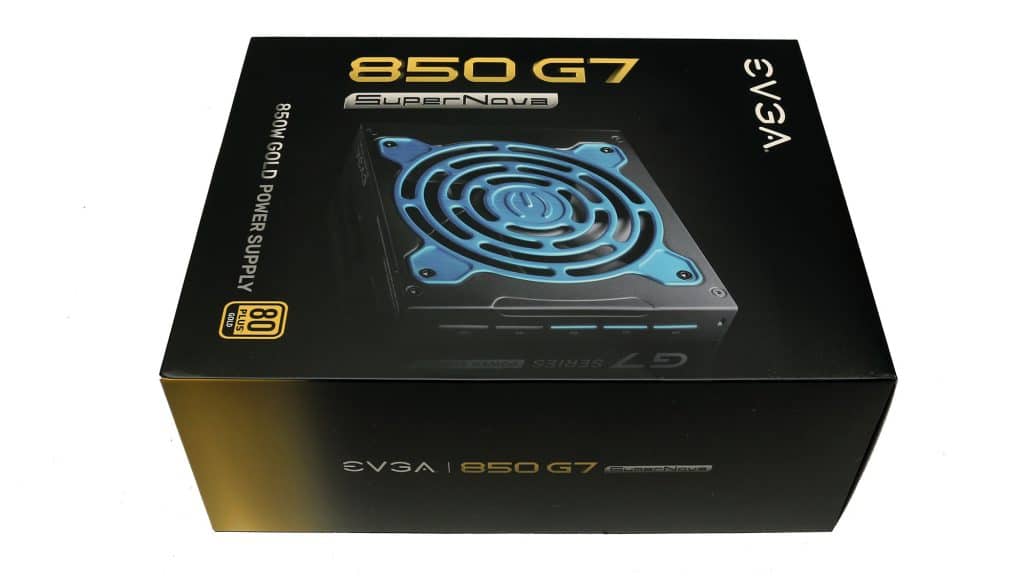

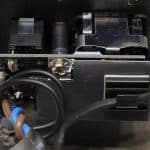

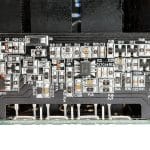
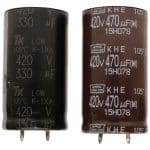
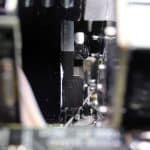

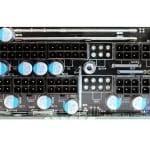
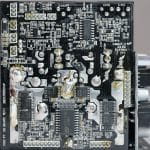
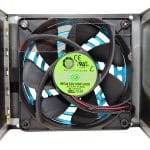
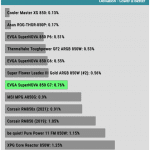

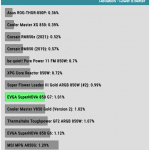
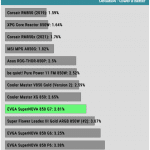
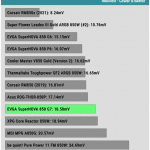
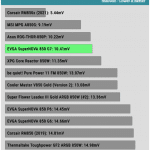
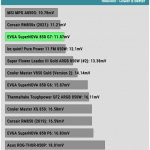
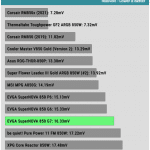
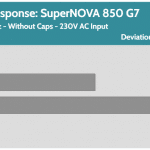
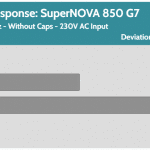
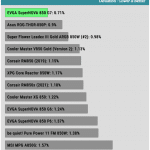
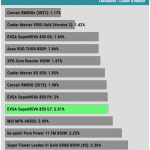
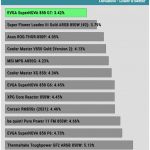
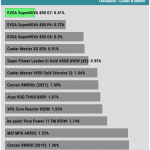
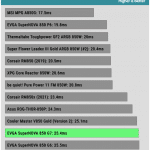
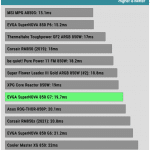
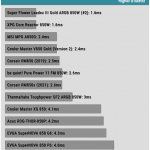
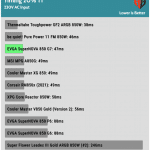
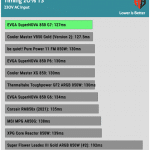
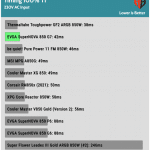
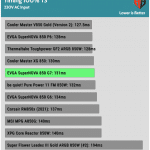
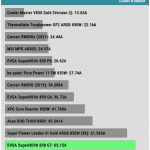
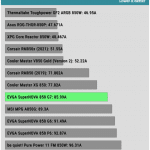
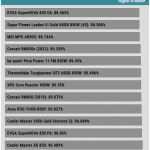
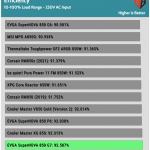
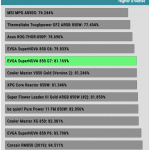
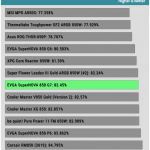


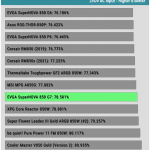
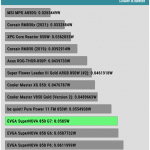

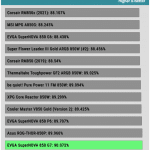
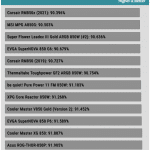
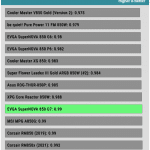


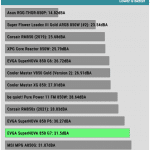
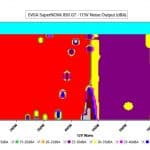
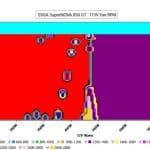
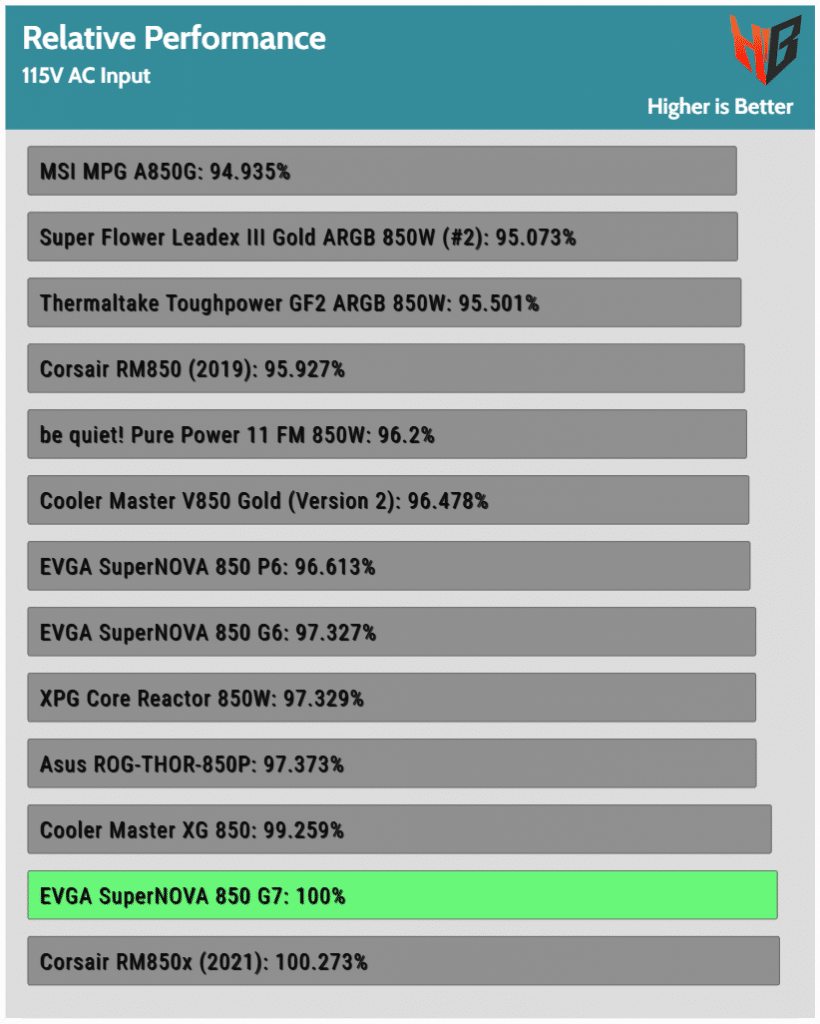
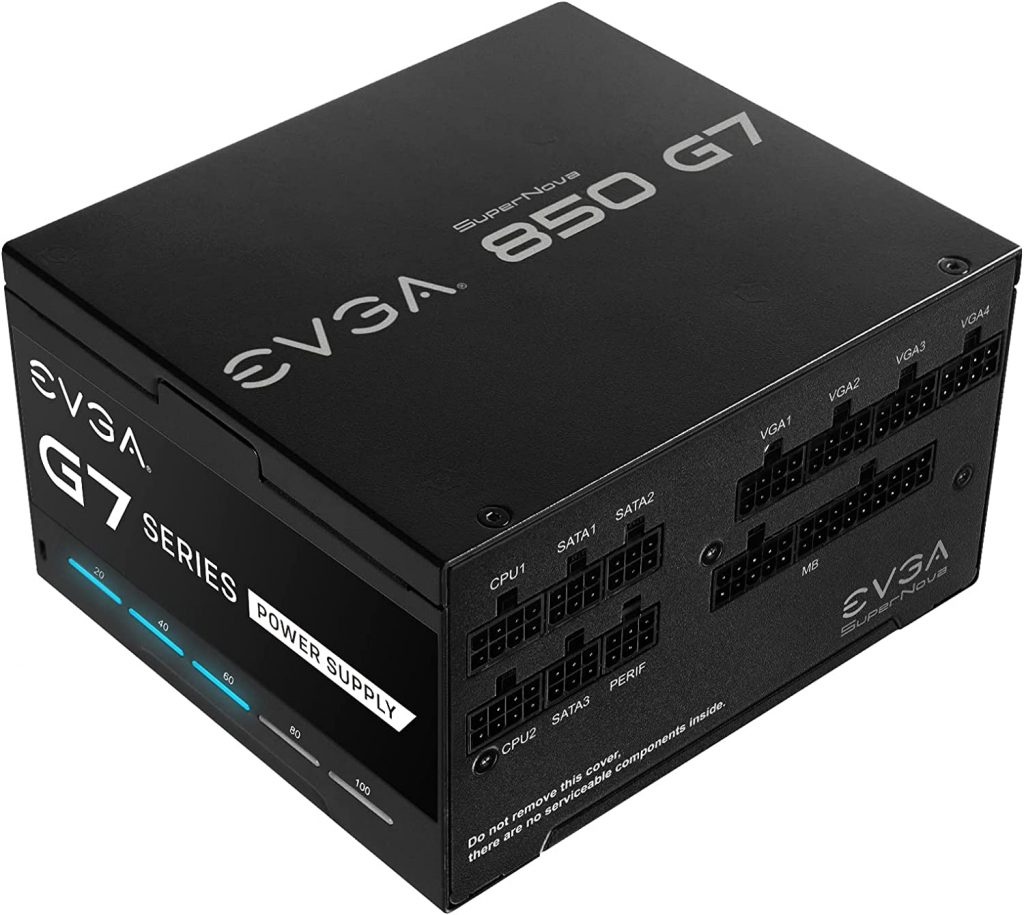

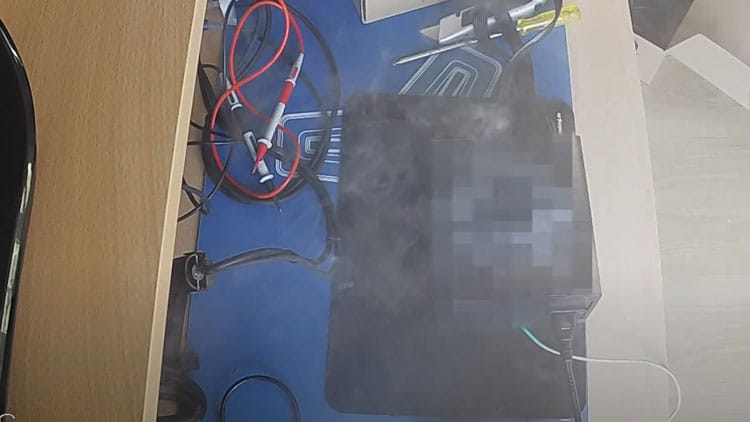
Does anyone note any coil whine from this G7 PSU (850/1000watts) when GPU/PSU pulls more than 450 watts?
Nope, I didn’t notice anything in my samples and on simulated loads.
I am shopping for 750W. How much of a negative is it to have all the components crammed into a smaller package (heat longevity etc)? Would you avoid getting this if a larger PSU with a 140mm fan can be had around the same price? This one is selling at a good price ($90) right now, plus you gave it such a good review. But the size of the PSU is irrelevant to me (normal mATX build) and the power draw LEDs seem unnecessary too.
Also that inrush current seems so much higher than most others on the chart, but I do not understand enough to know if that is an issue. I have always heard that the jolt of the PC being turned on is one of the most stressful things for components.
I was close to ordering CM V750 V2 until I saw this review. Trying to save money whenever it is reasonable. The lower price is appealing, but $15-20 isn’t a big deal if this smaller build/fan is going to be a negative over time.
G7 750w – $90
RM750 — $95
V750 V2 – $109
RM750x – $110
Would you buy this one or spend a few more dollars and get a less cramped platform? You mentioned soldering could be better, a mix of capacitor brands, OPP too high, and potentially more fan noise. But if I understand your review you are ranking this best or 2nd best competing with RMx line. And it currently has the lowest price. At this moment I am almost back where I started and leaning towards Cooler Master…
RM750x among the ones you mention would be my choice.
So in your opinion the G7 is better than the G6 albeit by a very thin margin?
It is better yes.